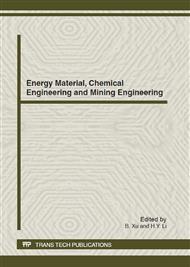p.22
p.27
p.31
p.39
p.43
p.47
p.51
p.55
p.61
Thermodynamic Research of Inclusion Forming in FeSiB Alloy Based on Energy Materials
Abstract:
The thermodynamic analysis shown that oxygen content in master alloy is very low, so other alloy elements content which are balance to oxygen are relatively high. In the amorphous master alloy, deoxidizing capacity of silicon is stronger than boron, and with process of decrease of the temperature, oxygen content decrease. The silicon in the master alloy can also take off the oxygen content below 1 ppm. Denitrification capacity of boron is stronger than silicon, and with process of decrease of the temperature, nitrogen content decrease. The boron in the master alloy can also take off the nitrogen content below 4 ppm. All of the research are based on energy materials and it will be useful for the development for energy saving.
Info:
Periodical:
Pages:
43-46
Citation:
Online since:
October 2012
Authors:
Keywords:
Price:
Сopyright:
© 2012 Trans Tech Publications Ltd. All Rights Reserved
Share:
Citation:


